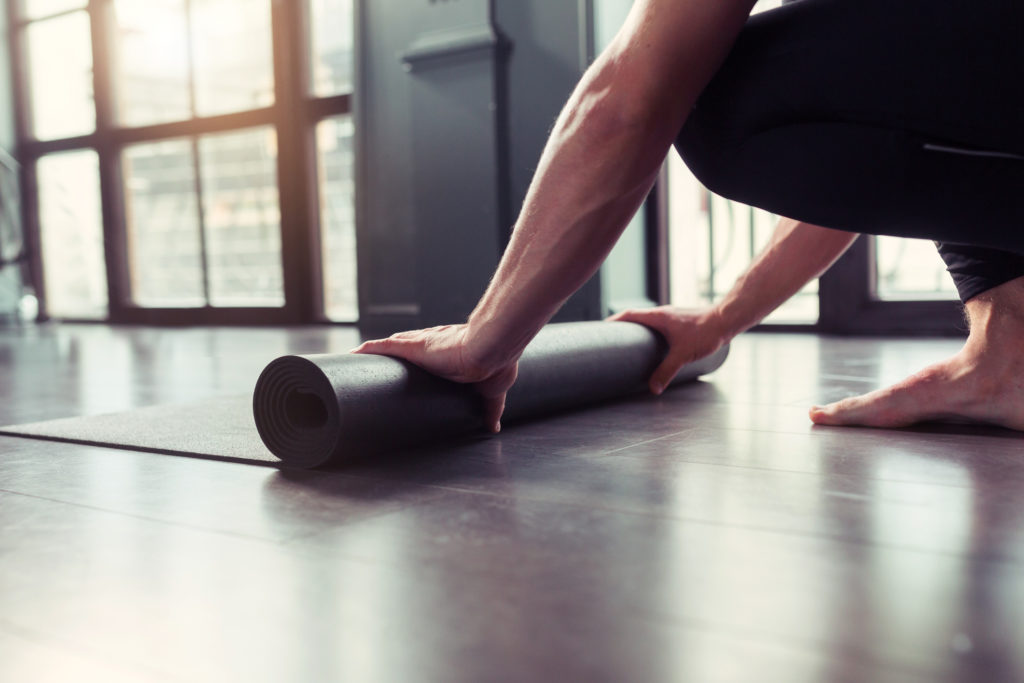 Men and yoga. The image that springs to mind here is that of a skinny guy in India, standing on the rock in the sunset, wearing a ponytail and beads, pulling some kind of Cirque du Soleil contortion.
Men and yoga. The image that springs to mind here is that of a skinny guy in India, standing on the rock in the sunset, wearing a ponytail and beads, pulling some kind of Cirque du Soleil contortion.
Californian Matt Smith is the polar opposite of that image. Tall, tanned and bodybuilder big. He looks just like the action men on the homepage of his website www.broga.uk.com. Broga, a form of yoga tuned more towards a male sensibility.
Matt had a promising American Football career wrecked by a freak hip injury during college. He turned to bodybuilding then discovered yoga when American clothing brand Lululemon approached him to be an ambassador. The other ambassadors were all female, and regarded as yoga royalty in Europe. Matt hated yoga but could see the benefits, so he invented Broga.
“I wanted to focus on the functional elements of yoga,” he explains. “Normally you go into yoga classes and there’s one guy, this is the inverse switch. I approach yoga language in a way men can relate to. It’s physiological, more anatomy, more ‘What am I supposed to be feeling? What is this achieving?’ Rather than traditional yoga terminology like ‘Lift your pelvic floor and open your heart.’ How do you open your heart? Do I even have a pelvic floor? It immediately sounds ridiculous. That always bothered me. I wanted to get away from that but stay very true to the core foundations of the postures in yoga practice.”
Now regular guys and girls (around 20-30 percent of Broga classes are female) are adding his sessions to their regular gym work, using Broga to improve athletic performance in sports like running.
Matt invited MR to try a session at Soho Gyms, Covent Garden. We joined a class of eight for a one hour Broga session that focused on legs – the perfect class for a runner to try. Matt breaks his Broga classes down into specific variants like someone might break down a weekly gym routine. “There’s legs, chest and triceps, back, shoulders and core, and then we a do a full body workout. We call it Broga Sizzle which is everything in one class.”
He keeps the room temperature at a sweaty 30 degrees. My perceptions going into the session were, ‘How hard can it be doing a few stretches on a mat?’ Midway through the session I reach back to grab my foot as we all perform a ‘Pigeon Stretch’ (cross one leg out in front of you with the other stretching flat behind. Pressing the hip of your rear leg into the ground, bend that leg at the knee and grab your foot as you would performing a quad stretch). By this stage even my shins are pouring with sweat. Sweat is the name of the game (Matt’s email signature titles him as Director of Sweat) the warm room encourages the connective tissues to open up a little bit more and help us achieve deeper stretches for longer.
You’re working hard but rarely out of breath. Matt directs your breathing throughout. The class begins and ends with deep breathing exercises, you feel extremely relaxed and that night I enjoy the best night’s sleep I’ve had in weeks.
What I like about Broga is the gradual progression. Everything builds, and gets tougher until finally you realise you’re in a genuine yoga posture, and holding it. “You repeat things like you would do in say track session, it ends up being strength training. As men we set objectives and we quantify things. It was really important to do that in yoga which no one has ever done. In a traditional yoga class you can go in and out of a posture quite quickly. With Broga you have enough time to strengthen through the posture.”
The session sees us build to around half a dozen different poses and stretches, including variations on leg raises, lunges and squats. The most torturous is the squat move that sees us bend our knees at 45 degrees and straighten our backs. Over the course of ten deep breaths in and out, we take the pose lower and lower. It burns. We come back up, shake it off and are told to repeat. “Breathe through the pain,” instructs Matt. ‘The pain isn’t going anywhere so ignore it and focus on your breathing.’ Interestingly the second set doesn’t hurt as much.
At the start of the class Matt tells us to listen to our body. During the session my body tells me that my hips are as weak as a pensioners’ but that my hamstrings are strong. It’s a common issue for those whose main activity is running. Broga identifies these weaknesses and allows you to address them.
“Runners typically have a couple of interesting problems. They get all kinds of leg injuries. One of the benefits of a Broga class are the isometric holds. We’re holding you in a position that’s anatomically correct. Before you add load to a move, like in the gym or add endurance to a move, like in running, we learn the correct way to hold our bodies. If you can improve your isometric stability, it allows you greater stability when load and endurance is added. Injuries happen when our proper position fails. If running is a repetitive movement through the hip flexors contracting, what balances that repetitive impingement of the joint? Nothing. You have to stretch it. Are you doing much work on stretching your hip flexors when you run, or your hamstrings, or your calves? You’re not, you have to balance that out. Broga does that.”
Add a Broga session to your exercise routine and watch your injury chances and PB times lower.






